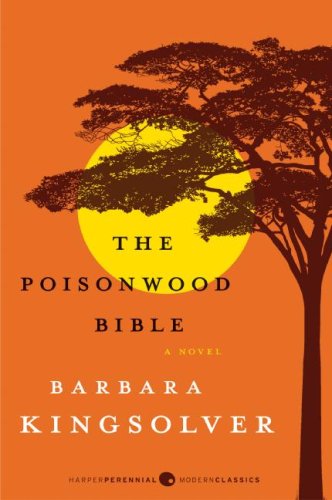!1: Now is the time The Poisonwood Bible: A Novel (P.S.) Order Today!
The Poisonwood Bible is a story told by the wife and four daughters of Nathan Price, a fierce, evangelical Baptist who takes his family and mission to the Belgian Congo in 1959. They carry with them everything they believe they will need from home, but soon find that all of it—from garden seeds to Scripture—is calamitously transformed on African soil. What follows is a suspenseful epic of one family's tragic undoing and remarkable reconstruction over the course of three decades in postcolonial Africa.
!1: Best Buy The Poisonwood Bible is one of those books that I have wanted to read for a long time. I finally had the opportunity to listen to the audio version, narrated by Dean Robertson and was very pleased.
For those of you who are not familiar with this novel, The Poisonwood Bible is the story of fanatical Baptist missionary, Nathan Price, who moves his wife Orleanna, and their 4 daughters to the Belgian Congo from Bethlehem, Georgia in 1959. The Reverend Price was hoping to bring Christianity to the people in the village of Kilanga, at a time when the people of that village were struggling to survive and to remain free from Belgium.
The family arrives in the Congo without a clue as to what they were in for. The bring seeds to plant, but the soil is so poor, seeds will not grow. There is no plumbing or electricity and disease is prevalent everywhere it seems. The Reverend tries to get the people to come to the river to be baptised, but no one is interested in finding God by bathing in waters where crocodiles live. While the goal of Nathan Price was to transform the the lives of the Congolese people by bringing God into their lives, what really happens is that the lives of this family is transformed bit by bit, by what life was really like for them in the Congo.
The story is told in alternating voices of Oleanna and his daughters, and covers a period of about 30 years. The story hooks the reader immediately as each of the characters share realistic views of what they were experiencing along the way. Nathan Price is the only major character who does not have a voice in this novel, and yet in some ways I felt I got to know him the best through the eyes of his wife and daughters. He was an extremely arrogant and unlikeable man who put his entire family at risk. He was degrading to women, and I can't think of one positive thing to say about him. I think the fact he had no voice made this story all the more poignant.
The Poisonwood Bible is a story you really need to read for yourself. It's touching, compelling and insightful. The author did an amazing job depicting the political climate at that time. It's a story about religious beliefs, a story of the disintegration of a family, and a story about forgiveness. It is a story that makes you think, and a story that makes you question the actions our government sometimes takes, which really is not always in the best interest of the people. I truly had sympathy for this family, especially as the years pass and each of the girls tries to find their place in the world. I loved the first half of this book, but felt that the second half got a little bogged down at times. Despite this, I highly recommend this book.
Rating 4.5/5 on Sale!
Thanks To : !: Brand New Flat Screen Tv Deals !: 28 Lcd HDTV Free Shipping !: Price 37 Inch Lcd ±1±: Buying Computers & Office Tools Free Ship !: Sharp Lcd Review













